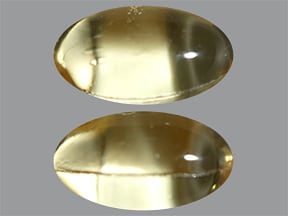

Recent evidence shows that ergocalciferol is not stable with storage, and it is far more susceptible to breakdown with cooking and baking than is cholecalciferol. Nutrition policy papers and guidelines leave unstated the obvious fact that calcidiol and calcitriol are not nutrients, and that those metabolites are not pertinent to food fortification or dietary supplementation. Calcidol is the major circulating metabolite of cholecalciferol, while calcitriol is the hormone that upregulates the active transport of calcium from the gut, and which suppresses parathyroid hormone secretion. In contrast, ergocalciferol is primarily a synthetic and less stable product which is less potent per microgram dose than is cholecalciferol. In nature, by far the major form of vitamin D that nurtures the body is cholecalciferol. The term “supplementation” has been used in the context of cholecalciferol, ergocalciferol, calcidiol, and calcitriol.

The combination of cholecalciferol and aspirin has the potential to meet key requirements of cost-effectiveness and humaneness in controlling possum populations, but the effect of the combination in non-target species has yet to be tested.The specific compound that is meant for use in the context of vitamin D supplementation is often ambiguous. Residue analyses of bait remains in the GI tract suggested a low risk of secondary poisoning by either compound.

The observed toxicosis had lower impact on the welfare of possums than either compound administered alone, particularly aspirin alone. Death was caused by localised damage to heart ventricles by aspirin, and inhibition of tissue repair by both aspirin and cholecalciferol. Combination of a high proportion of aspirin with a low proportion of cholecalciferol was effective in killing high proportions of groups of acclimatised, caged possums: this is attributed to both an unexpectedly high toxicity of the type of cholecalciferol used, and a proposed synergistic mechanism between the two compounds. Cholecalciferol (vitamin D 3) is registered for use in controlling possums and despite its many advantages it is expensive and relatively inhumane. The introduced Australian brushtail possum is a major vertebrate pest in New Zealand, with impacts on conservation and agriculture being managed largely through poisoning operations.


 0 kommentar(er)
0 kommentar(er)
